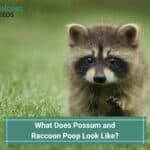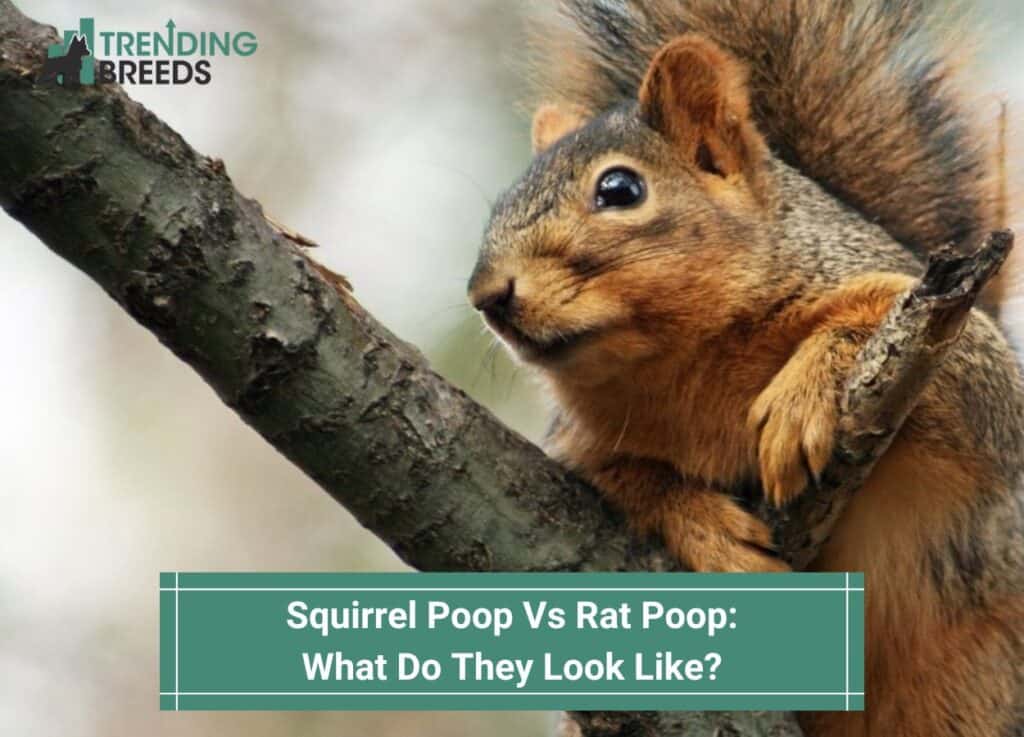
Have you recently found some feces in your house? As gross as this can be, you need to find a way to determine where the droppings are from so that you can act accordingly. Many rodent feces look the same. What is the difference between squirrel and rat poop?
Squirrel poop is much larger than rat poop. Rat poop is also much darker compared to the more brownish, pale red, or greenish colors of squirrel poop. Squirrel poop is also more rounded around the edges.
Keep reading below for more information.
Before you scroll further down this guide, check out these other animal-related articles: Does A Squirrel Lay Eggs? and Do Rats Have Bones?.
Table of Contents
Squirrel Poop vs. Rat Poop
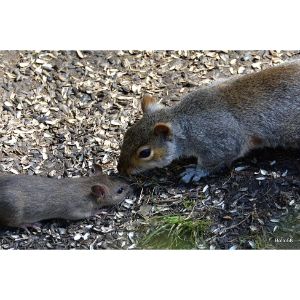
There are some important differences between squirrel and rat poop.
Differences in Color
Squirrel poop and rat poop don’t seem that different at first glance. If you compare the colors, you can quickly identify the kind of pest that has secretly made its way into your home.
Squirrels are almost always to blame if you find pellets of a brownish, pale red, or even greenish color anywhere in your home.
When it comes to rat poop, you’ll notice it’s noticeably darker and almost entirely black.
Differences in Size and Shape
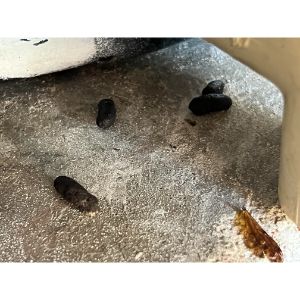
Identifying differences in shape is also essential. Squirrel feces resemble coffee beans and are slightly larger than rat feces.
Squirrel poop has a uniform and flat surface in terms of texture. On the other hand, rat droppings tend to be elliptical, if not slightly rectangular. Generally, they look as if they are black grains of rice.
What size is a squirrel’s dropping? The excrement of these two types of pests is commonly compared to raisins in terms of their general look.
Differences in Edges
The typical shape of a rat’s feces is that of a raisin, being thickest in the middle and tapering to sharp ends. However, squirrel stools are typically more cushioned and have rounded edges.
Differences in Placement
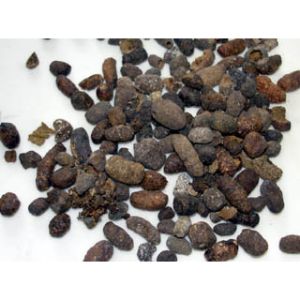
Squirrels, in contrast to rats, have a more orderly approach to the disposal of their waste. Everything is planned out in advance.
On the other hand, rats do not feel constrained to leave their droppings in the same places as squirrels; instead, they will sprinkle their waste around your home in a completely random pattern.
Both rodents produce about the same amount of excrement per day. These two miscreants have highly regular bowel movements because they enjoy snacking on your treats.
Differences in Quantity
Compared to rodents, squirrels have bulkier feces yet leave less waste behind. Squirrels can deposit anywhere from a dozen to twenty pellets at once when they defecate.
Because they consistently defecate in the same areas, enormous amounts of feces can accumulate in these areas.
In contrast, rats are erratic poopers whose waste is liberally dispersed wherever the trash-loving, filthy mischief-makers now choose to defecate.
To the untrained eye, it could look like you have a serious rat problem. Two rats may not seem like much, but these pests have a nasty habit of leaving their waste everywhere, so keep that in mind.
Overall Appearance
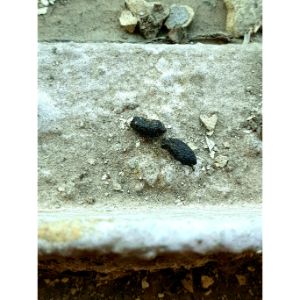
The glossy quality of squirrel and rat feces is an interesting similarity. The only difference is that squirrel poop loses some of its shine as it dries.
In contrast, rat droppings maintain their shiny and new appearance, which is intended to stimulate your gag reflex.
Diseases in Rat Feces
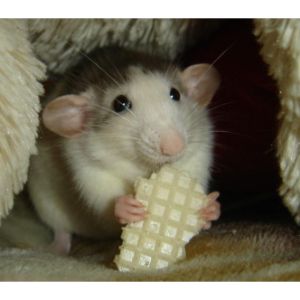
The following is a list of infectious diseases that could be spread through rat droppings and pose a risk to your family’s health.
Hantavirus
This virus can be transmitted by contacting rodent urine or feces, eating infected food, or being bitten by a rat.
After exposure to the virus, it can take one to five weeks to develop fully.
During this time, symptoms similar to the flu may manifest, including a high temperature, aches, pains in the muscles, exhaustion, headaches, dizziness, and chills.
In addition, issues relating to the abdomen, such as stomach discomfort, nausea, vomiting, and diarrhea, may develop.
Without appropriate medical care, a hantavirus infection can be lethal.
Salmonellosis
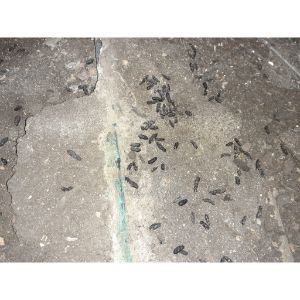
Salmonellosis is an infectious disease brought on by the Salmonella bacterium and can be passed on through various channels.
The vast majority of people are aware that this is an illness that is transmitted by the consumption of food that has been contaminated. Diseased rats can undoubtedly be a source of that transmission.
Food poisoning brought on by salmonella can be identified by its symptoms, which include diarrhea, fever, and cramping in the abdomen.
Even though it is not as severe as some other infections carried by rodents, it is nevertheless capable of causing significant pain and misery for an extended period, mainly if it is not treated promptly.
Rat-Bite Fever
The bacterial infection known as rat-bite fever can be passed on to people through direct contact with a diseased rodent or food tainted by a rodent.
Both Streptobacillus moniliformis and Spirillum minus, two distinct species of bacteria, are responsible for their development.
Streptobacillus moniliformis is more prevalent in North America, but Spirillum minus is more prevalent in Asia.
The Centers for Disease Control and Prevention (CDC) report that symptoms often manifest anywhere from three to ten days after exposure to an infected source.
These symptoms may include fever, vomiting, headaches, a rash, and muscle pain. Antibiotics can be used to treat those infected with this disease.
Lymphocytic Choriomeningitis (LCM)
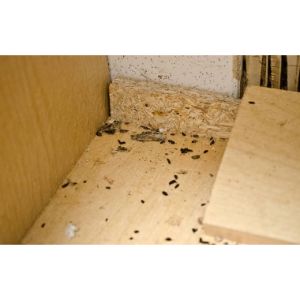
The lymphocytic choriomeningitis virus (LCMV) is the causative agent of lymphocytic choriomeningitis (LCM), another viral infection that can be transferred by contacting rodents, most notably the common house rat.
Rats can spread the disease by biting, urinating, or defecating someone or by touching their nesting materials.
There are two main stages of infection with LCM. In the initial stage, you’ll experience the classic signs of a viral infection: low energy, fever, aches and pains, loss of appetite, headache, nausea, and vomiting.
In the second stage, the symptoms are substantially more severe and may progress to a neurological level.
Fever, headache, stiff neck, tiredness, confusion, sensory disturbances, and/or motor symptoms, including paralysis, are all possible symptoms, as listed by the CDC.
Inflammation of the meninges, as well as the brain, is another possible complication of this condition.
Although LCM seldom results in death, it can be severe enough to warrant hospitalization, and the neurological symptoms may make it hard for an infected person to recover fully.
Bubonic Plague
Bubonic plague, also known as the Black Death, is a disease caused by Yersinia pestis and spread by rats infected by fleas.
This disease caused widespread death and destruction in Europe throughout the Middle Ages.
Because already sick fleas spread this disease, you risk exposure if your pet hasn’t been treated.
In most cases, this bacteria is transmitted when a person comes into contact with contaminated fluid or tissue or when they come into physical contact with an infected animal.
Symptoms can include one or more enlarged, sensitive, and painful lymph nodes (called buboes), which can emerge anywhere from two to six days after contact.
Antibiotics effectively cure this illness, but it will almost certainly prove fatal if it isn’t addressed.
Diseases in Squirrel Poop
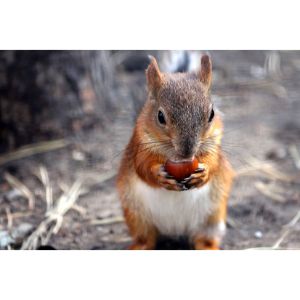
Squirrel poop can be a source of the following diseases. This list is not exhaustive, but it covers the most common diseases spread through squirrel poop.
Leptospirosis
Leptospira is the bacteria responsible for this illness.
This disease affects both humans and animals, and it can be passed on to the latter group through direct contact with the feces and urine of infected squirrels.
Or through direct contact with soil, water, or food contaminated with the former.
High fever, chills, diarrhea, vomiting, and muscle pain are just the beginning of what could be a long list of complications, including meningitis, kidney failure, and liver damage.
Salmonellosis
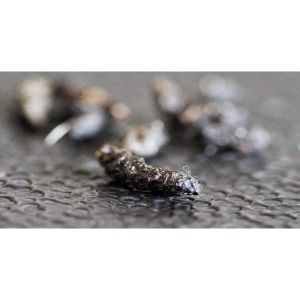
Salmonella is the bacteria responsible for this illness. Contact with feces, food, water, or surfaces contaminated with this bacteria can spread the disease to humans and animals.
Fever, abdominal pain, diarrhea, and vomiting are common symptoms of this sickness and often go away within five to seven days.
Hantavirus Pulmonary Syndrome
The Hantavirus causes a respiratory illness. Rodents shed this bacteria on their feces, and can be transmitted to people through inhalation of contaminated air or contact with contaminated surfaces.
Fever, weakness, and muscular aches are just the beginning; heavy coughing and difficulty breathing are also possible later. Therefore, this viral disease is potentially lethal if treatment is delayed.
Frequently Asked Questions
Are squirrel droppings a health hazard?
Squirrel droppings have two types of bacteria: salmonella and leptospirosis. These two can cause various diseases and ailments in humans and pets.
What does a raccoon poop look like?
Raccoon poop looks cylindrical and dark. It is bigger than a squirrel and rat droppings.
What do skunk feces look like?
These look like cat feces but can be a bit longer.
Squirrel Poop vs. Rat Poop: What Do They Look Like?
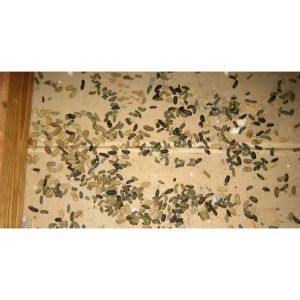
When you have all these important pieces of information, differentiating between the various rodent droppings is as easy as pie.
It is important to remember that the most revealing characteristics are its shape, color, and quantity.
Take the time to familiarize yourself with these differences. You will have a better chance of successfully identifying the animal that has broken into your home and urinated and defecated in inappropriate areas.
If you find this guide, “Squirrel Poop vs. Rat Poop: What Do They Look Like,” informative and helpful, you can check out these other animal-related articles from our team:
You can learn more about this topic by watching “How To Identify Squirrel Poop vs Rat Poop / Droppings: Side by Side Comparison” down below:


![Why Does Dog Poop Turn White? [9 Possible Causes] (2024) Dog poop that appears white while frozen on snowy ground.](https://www.trendingbreeds.com/wp-content/uploads/2021/12/Frozen-dog-poop-150x150.jpg)

